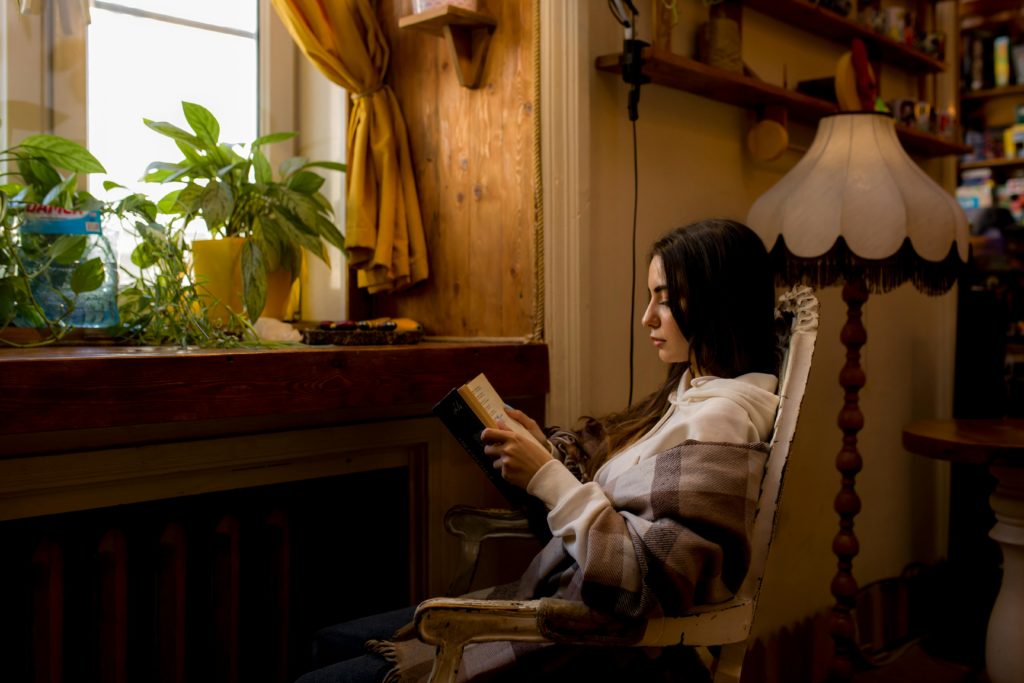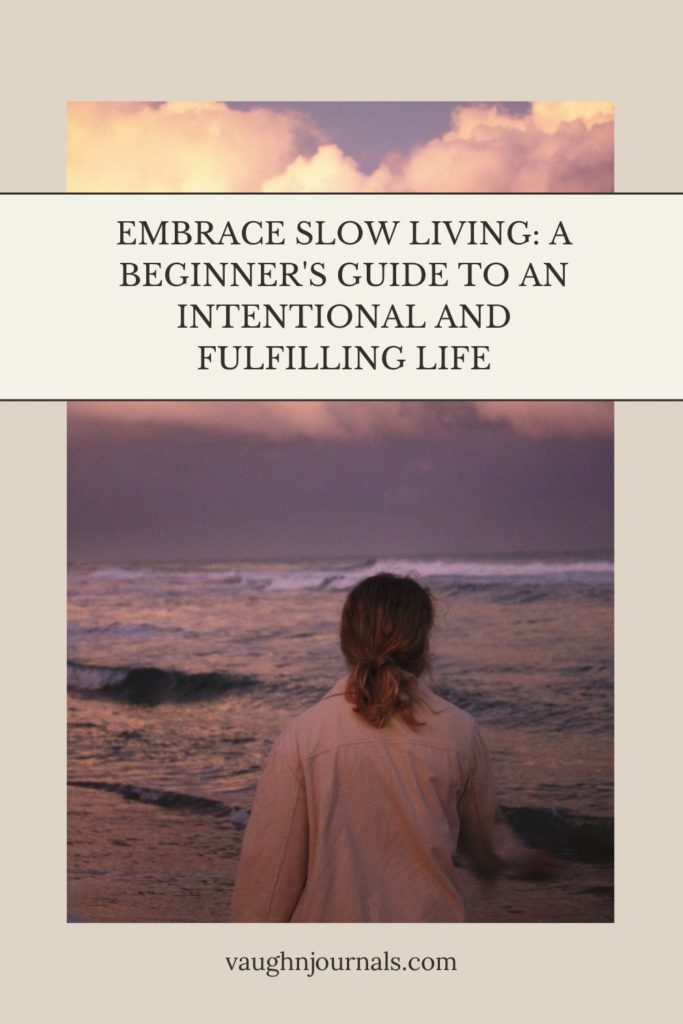
You’ve probably heard of slow living. It’s increased significantly in recent years through idealized social media posts, to the point where it can oftentimes feel unattainable. Like it’s a way of life that is only available to those who don’t have to work or don’t have kids or insert excuse.
In reality, slow living is a movement that originates in 1980’s Italy by Carlo Petrini and a group of activists. They started the movement when faced with the opening of a McDonald’s in the heart of Rome. For this reason, slow living was originally called Slow Food and the goal was to defend regional food traditions.
From there, the movement has grown to other areas of people’s lives. From the way we eat to the way we view our chores, to the way we work, read, drive, exercise, raise our children. Some even incorporate slow living into the way they make love with their partners. The best part, it really is for everyone.
The Beginner’s Guide to Slow Living
In this guide, I’ll be going a little bit more in depth on what slow living is and how it has become the way of life we typically see today. I’ll also be going into some of the main benefits and drawbacks of slow living, and I’ll also be offering some beginner’s tips.
Be sure that you read until the end as I’ll also be offering some other resources on slow living.
What Is Slow Living?
Today, slow living is a way of life. Those who practice it seek to cut out any unnecessary rushing and instead try to live in the present moment as much as possible.
When someone practices slow living, they tend to focus their attention on the quality rather than the quantity in their lives.
This takes a lot of mindfulness and making intentional choices for how we spend our time, the people we allow into our lives, the things we have, the way we act in certain situations and so much more.
Slow living, as I’ve mentioned above, originated as a response to the opening of fast-food chain, McDonalds, in the heart of Rome. Slow Food’s goal was to defend the region’s traditions around food.
According to Carlo Petrini, founder and president of the Slow Food movement, “everyone has the right to good, clean, and fair food”.
Good, in this case, meaning a product of high quality with a delicious flavor.
Clean, meaning the naturalness in the way the product is produced and transported.
Fair, in this case, is defined as providing appropriate pricing and treatment for both producers and consumers.
From Slow Food, the movement has grown substantially as people have started to realize that it can benefit all areas of life, in all areas of the world.
In recent years, slow living has been adopted in response to a lot of the modern day stresses and overconsumption of our capitalistic society.
Benefits Of Slow Living (and drawbacks)
Improved Well-Being
Slow living can significantly contribute to improved mental and physical well-being by promoting a more intentional, mindful, and balanced approach to life.
It does this by reducing stress levels seeing as it encourages a reduced pace of life.
It encourages you to take the time for self-care, reflection, and relaxation which can all alleviate mental tension.
This also alleviates the risk of stress-related illnesses such as cardiovascular issues and suppressed immune systems.
This way of life also encourages an improved sleep quality which can be crucial for cognitive function, mood regulation, immune function, and overall vitality.
Improved Relationships
Slow living emphasizes spending quality time with loved ones. This can lead to deeper connections, improved communication skills, reduced conflict, enhanced empathy and patience with one another.
Essentially, by incorporating slow living principles into daily life, you can cultivate relationships that are more meaningful, fulfilling, and resilient.
Slow living is about fostering a deeper connection with oneself and those around you, thus creating a positive ripple effect in all aspects of interpersonal dynamics.
Increased Mindfulness
Slow living and mindfulness share a close connection with one another. This is because they both promote intentional awareness and a being present in the current moment.
Through things like mindful daily rituals, mindful eating, embracing stillness, and balanced self-care, living a slow life can serve as a pathway to mindfulness.
This provides a framework for you to embrace a more mindful and purposeful way of life.
Downsides To Slow Living
While slow living does have a wide array of benefits, which, I strongly believe far outweigh any drawbacks. It’s still important to mention them and be mindful of them as we practice slow living.
For instance, slow living might involve a shift away from traditional career paths which can have a financial toll on the individual.
It also provides more time for introspection which for some individuals can lead to overthinking certain things or dwelling on negative thoughts.
It’s incredibly important to approach slow living with a realistic understanding of its implications.
You have to find a balance that aligns with your own individual preferences, needs, and circumstances.
What works for someone else, what works for me even, may not work for you. If you’re serious about embracing slow living, it’s important for you to consider your personal values and goals.

Simple Tips For Beginners
- Prioritize Tasks
- Identify the most important tasks for your day and focus on completing those first. This will ensure that essential responsibilities get done first, reducing the risk of feeling overwhelmed later in the day.
- Set A Morning Routine
- Establishing a simple and consistent morning routine can help you have a calm and intentional start to your day.
- Declutter
- Having a more organized and serene space can help you feel less overwhelmed and be more present with yourself and loved ones when you’re in your space.
- Take Breaks Throughout The Day
- Short breaks throughout the day can help you recharge. A brief walk or some breathing exercises can help enhance productivity and reduce stress.
- Learn To Say No
- Evaluate your commitments and be willing to turn down invitations or tasks that don’t align with your priorities. Setting boundaries is a crucial part of maintaining a simplified and balanced daily routine, not to mention your peace.
- Practice Gratitude
- In order to help foster a sense of contentment and reduce stress, try taking a moment or two to be grateful for some positives in your life.
- Establish A Bedtime Routine
- To help promote restful sleep, wind down before bedtime with a simple night time routine.
Finding Joy
In embarking on this journey to slow living, you are cultivating a profound shift in the way you approach every aspect of your life.
The principles of slow living encourage us to savor every single moment, remove the unnecessary noise of our lives, and prioritize what truly matters.
As a beginner, it’s important to remember that slow living is not about perfection, it’s about progress. It’s about finding joy in the small things and embracing a pace that aligns with our values.
Now here’s your challenge! Choose one aspect of slow living to focus on this week and share your experiences and insights in the comments below!

Leave a Reply